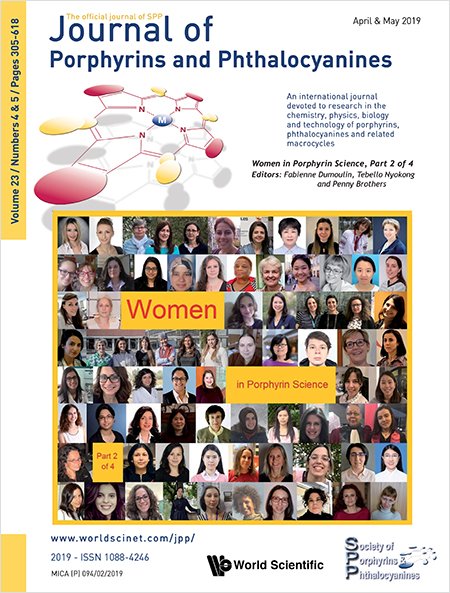Non-peripherally alkylamino-substituted phthalocyanines: Synthesis, spectral, photophysical and acid-base properties
Abstract
Non-peripherally substituted metal-free and zinc phthalocyanines (Pcs) bearing four diethylamino groups and four Br atoms were prepared. Optimal conditions for synthesis of corresponding precursor (i.e. 3-bromo-6-(diethylamino)phthalonitrile) either by nucleophilic substitution or by Buchwald–Hartwig coupling were studied. Noteworthy, 3,6-bis(diethylamino)phthalonitrile was also formed, nevertheless only at low yield (typically below 1%) and all attempts for its cyclotetramerization failed. Q bands of prepared Pcs were strongly red shifted up to the near-IR region (769 and 800 nm in THF for zinc and metal-free Pc, respectively). Unusually large hypsochromic shifts of the Q bands, 130 and 80 nm for metal-free and zinc Pc, respectively, were observed upon treating these Pcs with trifluoroacetic acid, which was attributed to the protonation of non-peripheral amines. Treatment with sulfuric acid led to subsequent protonation on the azomethine nitrogens as well. Photophysical study revealed low fluorescence emission of both derivatives (ΦF <0.03, in THF) and efficient singlet oxygen production only for zinc Pc (ΦΔ= 0.77 in THF and 0.60 in DMF).

This paper is part of the 2019 Women in Porphyrin Science special issue.
Handbook of Porphyrin Science now available in 46 volumes


